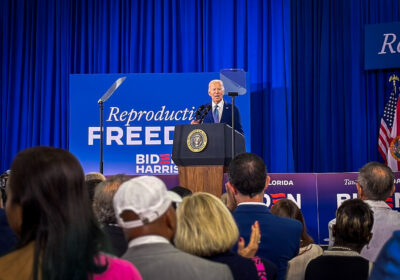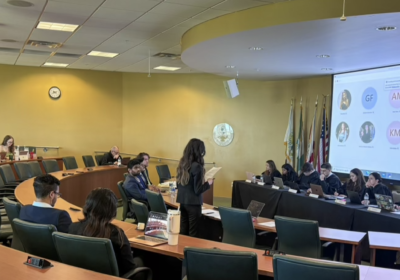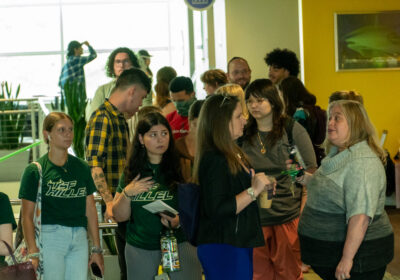Updated weather station brings campus forecasts online
With its recently updated weather center, USF hopes to provide more than a weather forecast.
The weather station at the USF Botanical Gardens was updated on June 1 to be equipped to provide constant, online weather readings on USFs home page.
Students will have access to weather alerts and forecasts via monitors stationed at the Botanical Gardens and the station atop the Natural and Environmental Science (NES) building.
USF News recently donated a rain gauge, wind rose, psychrometer and other equipment that measures sun and cloud coverage to the Botanical Gardens center. The Galileo Group, a digital imaging company, also provided a high-resolution web cam, worth more than $1000, from which students can see live footage of USF grounds from the NES building.
Jason Simms, who is an information technology support specialist at USF, installed the software for the new weather system and monitors the information from both weather stations. The old weather station, he said, could only archive records and couldnt create weather forecasts.
With the new software and the new site, we have the ability to connect up with databases that allow us to provide the forecast, he said. We can do much more real-time information.
Jennifer Collins, a geography professor, said USF has been monitoring weather since 1968,
At the time, the geography department moved into the Social Sciences (SOC) building, where Dewey Stowers, a geography professor, used a fax recorder and teletype, a typewriter that can be used to send typed messages from one point to another, to study weather data and write the daily weather forecast on a chalkboard in the building.
In 2005, the equipment was moved from the SOC Building to the roof of the NES building, where an automatic rain gauge, a temperature and relative humidity sensor, a weather vane and anemometer are situated.
The new equipment in the Botanical Gardens will help monitor its climate and provide forecasts, which will be broadcast through the website. The forecasts from the Botanical Gardens are more accurate because theyre taken at ground level, Collins said.
The garden is in an area of lower terrain and situated next to a lake where the temperature, wind and humidity can be distinctly different from other parts of the campus and the Tampa Bay area in general, she said. The benefits will be a more thorough understanding of the atmosphere, weather and climate trends.
Students and faculty from many USF departments, such as environmental science and biology, have used this data for their research, Collins said.
Laurie Walker, director of the Botanical Gardens, said she sees the new system as not just a teaching tool, but as binding tie to the community around USF.
Its really kind of neat to see it, Walker said. But even better, its the people in the community who can see it as well, and maybe some kids or students from another university would come and see it and be interested in becoming a student here to learn more about it. Were kind of that bridge between the two communities. Weather is one of those areas that affects all of us, and I think this station is a way to get a lot more people interested.






